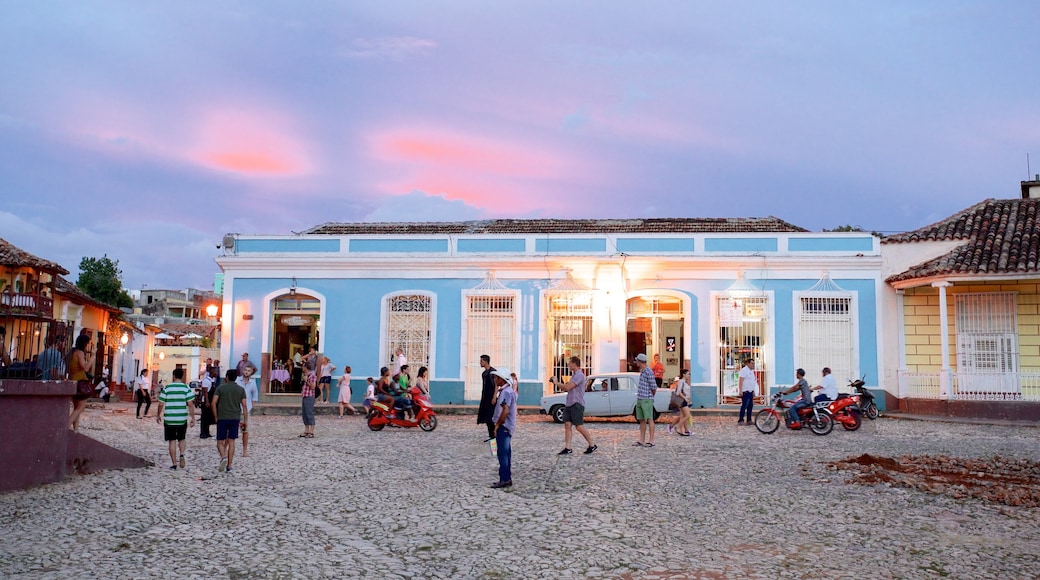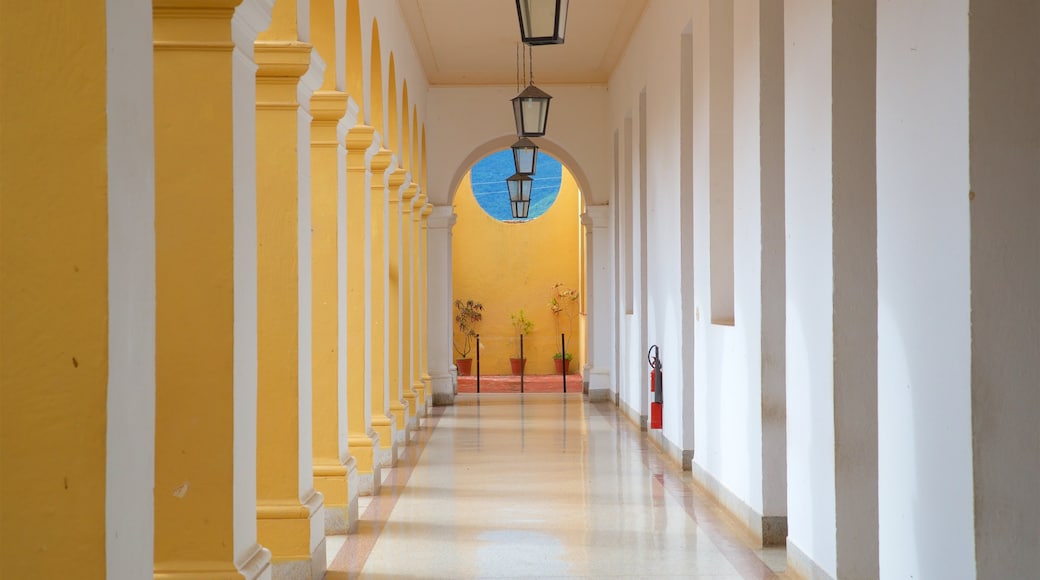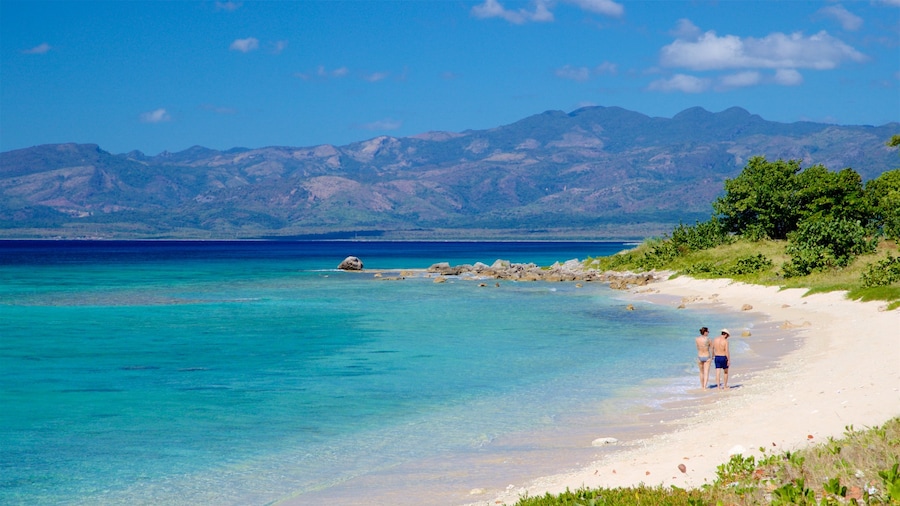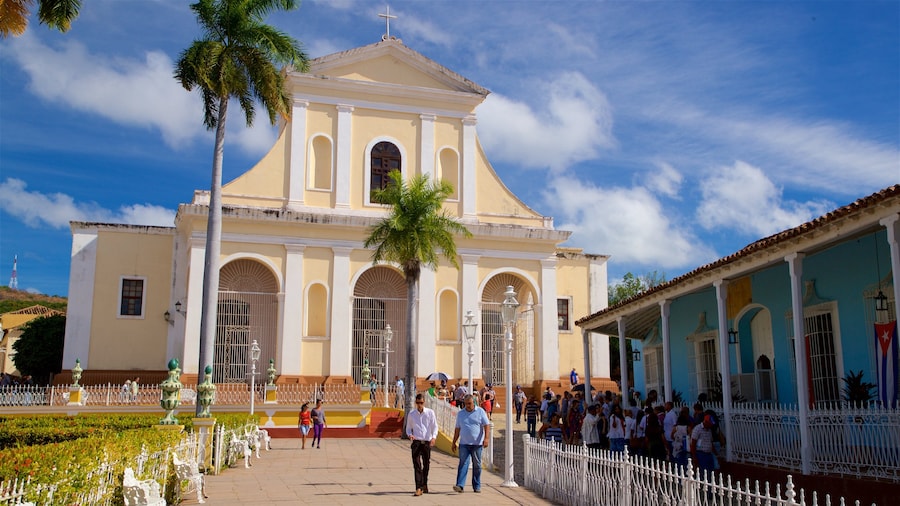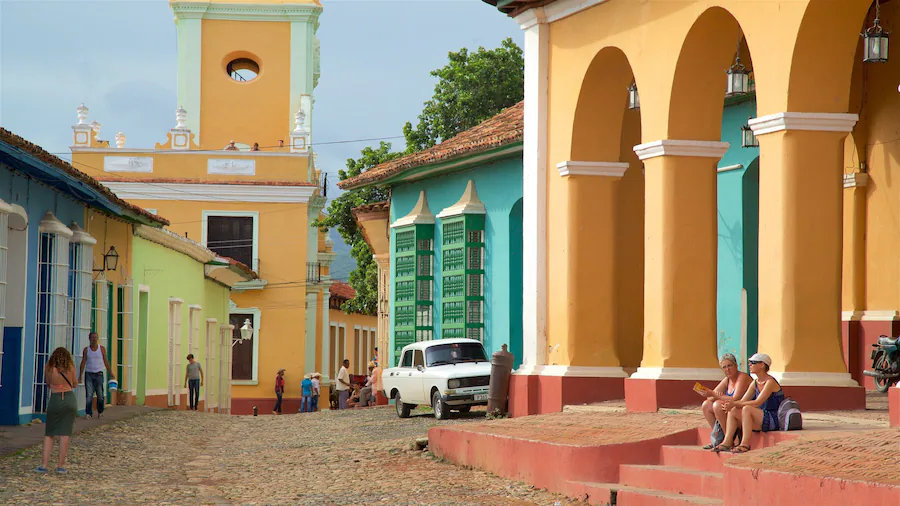Trinidad was founded by Spanish colonialists over 400 years ago. Visit today to see a few preserved relics from the early colonial period and many structures from the booming times of major sugar and tobacco production. The city and nearby sugar production areas in the province of Sancti Spíritus have been recognized as a UNESCO World Heritage Site.
Walk around the Plaza Mayor in the heart of the city to see stately structures from the 18th and 19th centuries. Palacio Brunet, once a family home, now houses the Romantic Museum, with treasures from the height of the colonial era. Palacio Cantero, another large mansion, houses the Municipal History Museum. Climb to the top of its tower to gaze across the city’s irregular cobblestone streets toward the blue ocean.
To see the magnitude of the operations of the one-time-great cane sugar production, drive northeast about 30 minutes to the Valle de los Ingenios or Valley of the Sugar Mills. Explore the sites of over 70 former sugar mills in this living museum, along with plantation homes and worker barracks. For nearly 100 years, from the late 1700s to the late 1800s, sugar gave Trinidad and the surrounding area prosperity. Much of this wealth resulted from the labor of slaves, numbering over 11,000 mill workers in 1827.
Just south of the historic center of town is a protected beach along the Bay of Casilda. Come to Playa Ancón to enjoy its white sands and warm waters. Head west to hike in the mountains of the Topes de Collantes nature park to the waterfall at Salto del Caburní.
Reach Trinidad by car in about 4 hours from Havana or fly domestically to the Trinidad Airport. Walk between many of the sites in the historic town and take a taxi or bicycle to the beach, the mountains or the Valle de los Ingenios.


